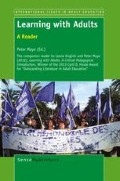Abstract
When cinema appeared at the end of the nineteenth century, it was just another form of entertainment along with theatre and music. Within no time, however, its technical novelty turned it into a mass communication medium since the same production, however short in duration, could reach many people at the same time across the length and breadth of a country or the world over.
Access this chapter
Tax calculation will be finalised at checkout
Purchases are for personal use only
Preview
Unable to display preview. Download preview PDF.
References
Allport, G., & Portman, L. (1947). The psychology of rumour, New York: Holt.
Daniels, W. M. (1951). The Point Four Programme, New York: H. H. Wilson.
Felciano, G. (1981). The educational use of mass media, New York: The World Bank.
Ghosh, Avik. (2006). Communication technology and human development, New Delhi: Sage Publications
Hovland, C. I., Janis, I. L. & Kelly, H. H. (1953). Communication and persuasion, New Haven: Yale University Press.
Klapper, J. T. (1960). The effects of mass communication, Illinois: Free Press.
Limbacher, J. L (1967). Using films. A handbook for the program planner, New York: Educational Film Library Association.
Oliger, J. (1968). The mass media in adult education, Syracuse, New York: ERIC Clearing House on Adult Education.
Rogers, E. (1962). Diffusion of innovation, New York: The Free Press.
Severin, W., & Tankard, J. (1987). Communication theories, New York: Hastings House.
Shah, S. Y. (Ed). (2008). International perspectives on adult and lifelong education: Selected papers, New Delhi: International Institute of Adult and Lifelong Education.
Singhal, A., & Dearing, J. W. (2006). Communication of innovation: A journey with everett Rogers, New Delhi: Sage Publications.
UNESCO. (2006). ‘Literacy initiative for empowerment, 2005–2015: Vision and Strategy Paper’, Hamburg: UNESCO
UNESCO. (2009). Confintea VI: Harnessing the power and potential of adult learning and education for a viable future, Belem: UNESCO.
Author information
Authors and Affiliations
Editor information
Editors and Affiliations
Rights and permissions
Copyright information
© 2013 Sense Publishers
About this chapter
Cite this chapter
Bhattacharya, A. (2013). Adult Education and Film/Television. In: Mayo, P. (eds) Learning with Adults. International Issues in Adult Education. SensePublishers, Rotterdam. https://doi.org/10.1007/978-94-6209-335-5_13
Download citation
DOI: https://doi.org/10.1007/978-94-6209-335-5_13
Publisher Name: SensePublishers, Rotterdam
Online ISBN: 978-94-6209-335-5
eBook Packages: Humanities, Social Sciences and LawEducation (R0)

